Boosting Our 4G Internet Speed at Home Using an Outdoor Antenna
This blog post looks at using an outdoors Poynting omni-directional 4G antenna/aerial to boost the internet data signal at a house or static caravan in the UK.
If, like us, you spend weeks away from home, can’t get a wired internet connection into your home, don’t want to have to pay for a land line you’ll never use or want a back-up in case your fibre connection goes down, you might want to consider using wireless 4G mobile internet at your house. My dad’s done this for the past year, using his 4G Huawei router at home which he takes with him when he visits his static caravan, with an unlimited data £20-a-month Smarty SIM, enabling us to stay in touch using WhatsApp video calls wherever he us. We’ve also used a 4G router in our motorhome for a few years, connected to a roof-mounted antenna from motorhomewifi.com which we’ve been very happy with.
The 4G internet signal at our home in the UK was just a little too weak to reliably stream TV though, so we’ve recently boosted it using an external 4G antenna, in a similar set-up to our motorhome. This post describes the equipment we used, the installation process and the resulting speed increase we saw. The system we’ve used is only suitable for a static installation, as it uses a mast and while the antenna is supposed to be omni-directional, it definitely works better when pointed towards the nearest mast. For a motorhome, caravan or boat, the same concepts and types of equipment apply, although most people using omni-directional antennas designed for roof mounting, like the popular Poynting Puck (available from Amazon for about £65).
Why We Got an External 4G Internet Antenna
We currently use a Huawei E5577Cs-321 router to connect to the internet in our motorhome, and more recently have started using it at home too. The router works best when high up and outdoors, as the metal shell of the van and the bricks and insulation at home partially block mobile signals. This is fine when the weather’s good and for short periods, as we can just put the router on the roof and run it from the built-in battery. For wet weather or for longer periods, that’s not great though so attaching it to a permanently-mounted outdoors weatherproof antenna is well worthwhile. That way we can leave the router inside, plugged in so it’s always on charge and with a boosted signal from the antenna, which makes the WiFi in the van/house significantly faster.
In the van we’ve a roof-mounted omni-directional 4G antenna. This has worked very well for us over the years, enabling us to use the boosted internet while driving and wherever we pull up across the UK, Europe and North Africa, we have the internet working immediately. No hassle, no trying to work out where to point an antenna, no dog-slow times of the day, no stress with passwords or limits on devices, it just works. For £20-a-month on a rolling 30 day unlimited data contract from Superdrug Mobile, it’s proved to be a great system. Normally we cancel our SIMs when we get back to the UK and hunt out the best deal ahead of our next trip overseas, however we knew we’d be doing some motorhome trips in the UK this year, so we decided not to cancel the SIM and use it for our internet at connection if we could get a good-enough signal while at home.
Using speed test sites like this one, we knew we could get around 3 or 4Mbps with the router indoors and upstairs at home, and the front of the router showed a weak (1 bar) 4G internet signal. We saw the speed increase to around 5 or 6Mbps if we took the antenna on the roof and held it up high, so we knew there was an opportunity to boost our internet speed if we fitted an outdoors antenna. We wanted a consistent speed of above 8Mbps, to allow us to stream high definition TV in the evening when the networks are busiest.
What about 5G? If I’m honest we only thought about this after we’d bought a 4G antenna! However, checking the various networks’ coverage checker websites only EE showed a weak outdoors 5G signal here, which we’re not confident would actually exist in practice as we’re in an area of town notorious for poor mobile signal. Also, we’d have to replace our router and SIM with 5G-enabled ones, which wouldn’t be cheap. Finally, we don’t actually need 5G network speeds, so we’re OK with our 4G internet system.
The Poynting 4G-XPOL-A0001 4G Omni-Directional Antenna
There are a ton of different 4G antennas available, but we chose the Poynting 4G-XPOL-A0001 for these reasons:
- It has great reviews on Amazon.co.uk and costs about £80. If you look on Amazon’s page for the antenna, there’s a ‘New & Used’ option which we used to get the antenna for £65 from the Amazon Warehouse and it was brand new when it arrived although not in the original packaging.
- It’s weatherproof and includes suction cups so can be mounted on a window for a semi-permanent solution. It can also be mounted on a pole, which has enabled us to create a permanent install on our building, pointing in any direction above the line of the roof.
- Poynting do sell a uni-directional antenna, the Poynting 4G-XPOL-A0002, which should get a stronger signal than the A0001. It’s roughly double the price though, so we opted for the cheaper antenna.
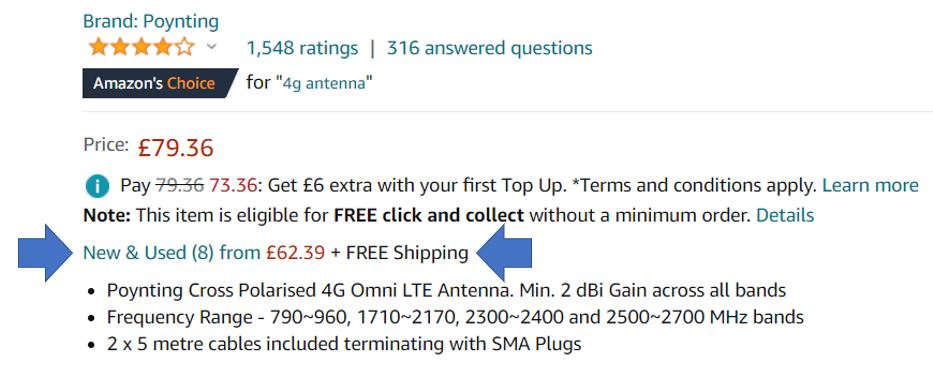
The Huawei E5577Cs-321 Router
As mentioned above, the antenna has to be connected to a router. On its own, the antenna doesn’t do anything, it doesn’t have a power supply and doesn’t create a WiFi network, the router does this job. We already had an unlocked Huawei E5577Cs-321 from motorhomewifi.com, which importantly has the connectors for an external antenna. Not all routers have these connectors, so you need to make sure yours does before buying one if you intend to pair with an antenna. Our E5577Cs has two TS9 style connectors for an external antenna, but these can be connected directly to the two co-axial cables from the Poynting 4G-XPOL-A0001, which has two SMA connectors. This isn’t a problem, you just need a couple of SMA to TS9 converters, like these on Amazon.
The Antenna Mounting Kit
The Poynting 4G-XPOL-A0001 can be attached with suckers to the outside of a window, or mounted on a pole. We used the suckers for some basic testing before we mounted the antenna on a pole. We used a heavy-duty bracket and pole like this one on Amazon, although we got just the bracket from B&Q and used a section of old 40mm pole which was being given away and repainted it with direct-to-rust white paint. The bracket had 10mm plastic wall plugs and four coachbolts which gave a very solid feel when fitted in holes drilled into brick.
The Antenna Installation Process
This is the process we went through to install the antenna above our roof-line:
- Before buying the mounting bracket we did some tests with the antenna holding it above the roof pointed in various directions. We used speedtest.net to get an idea of the best speed in various directions and heights. Although we have a good idea where the nearest network mast is (which we confirmed with google maps), we tried all directions as some reports say reflections from buildings can result in the best speed achieved pointing away from the mast, however we found pointing directly towards the mast gave the best results for us.
- We worked out where to put the router inside the house. As we’re in a relatively small space here we can get a good WiFi signal from it anywhere inside, so opted to install the router upstairs which meant the 5m of cable from the antenna was easily enough. The router needs to be near to a power socket so it can be on charge all the time.
- Our biggest problem was getting the antenna cable through the wall to the router, which meant drilling two 10mm holes through about 45mm of wall and insulation. We bought a long drill bit and were lucky to get two holes vertically above one another so we could easily cover them with a section of white cable trunking. To avoid the need for two holes, you could drill a single one but it would need to be about 20mm wide to take both antenna cables.
- Using a spirit level to get it vertical, we installed the pole mount and the pole, loosely attaching the antenna to it using the included metal strap.
- We then tested the antenna again several times pointing in slightly different directions until we got the best signal before tightening up the strap.
The Resulting Increase in Signal Strength from the Outdoors 4G Antenna
The speed over the 4G network various throughout the day but in general is now about two to three times the speed without the antenna. We see bandwidth ranging from around 6Mbps to 25Mbps, but in general it’s roughly 10Mbps. This has proved good enough to stream HD TV to our smart TV with barely any buffering. We still see the ‘ring of doom’ very, very occasionally, but when we test the network speed at that moment it’s often still around 10Mbps, suggesting the problem is with the channel itself and not with our network connection. Overall we’re happy with the set-up and with the flexibility it gives us to take our 4G router and SIM to the van and bring it back home with us. For £240 a year for unlimited data anywhere across most of Europe, with speeds generally around 10Mbps, that’s fine for our needs.
Cheers, Jay


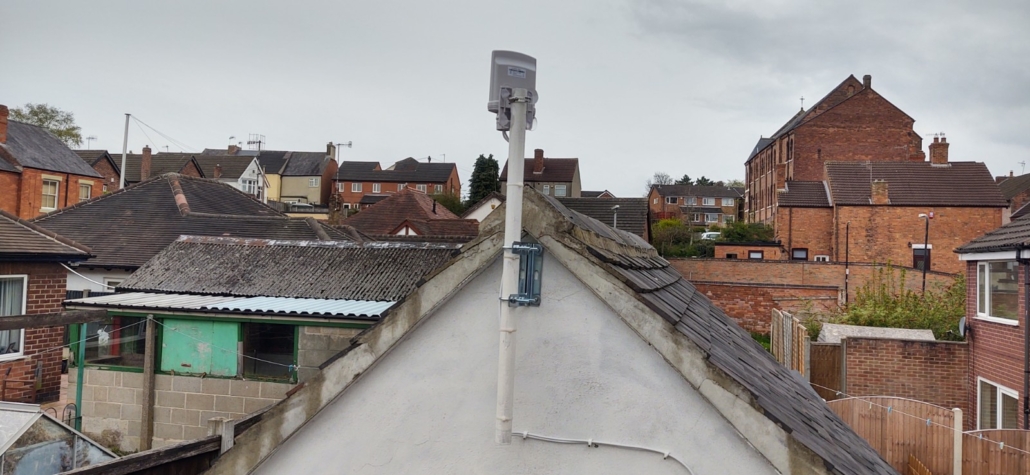
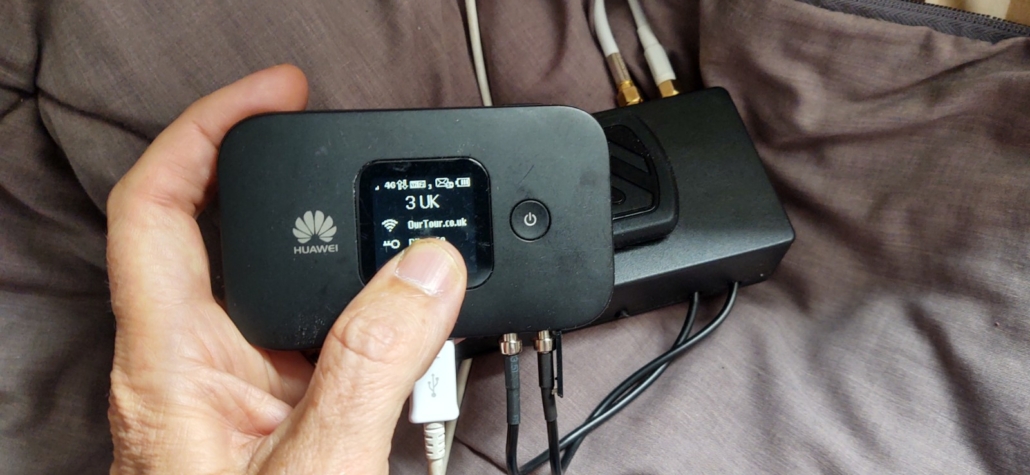
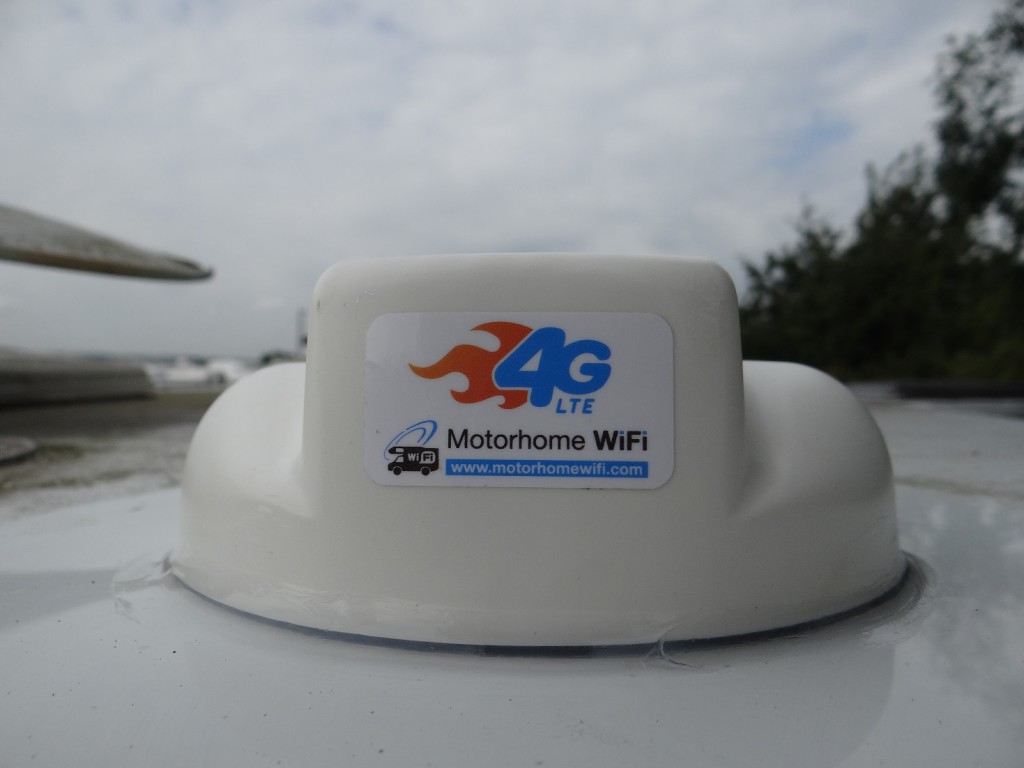
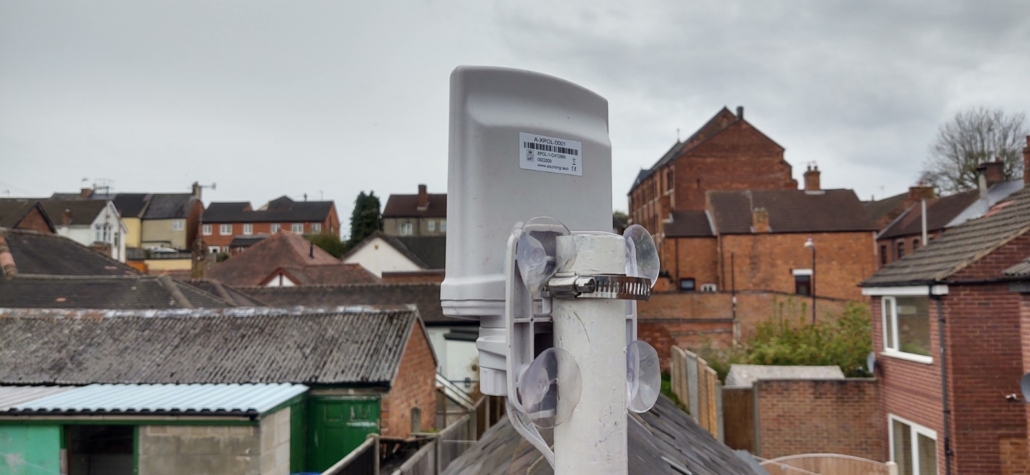
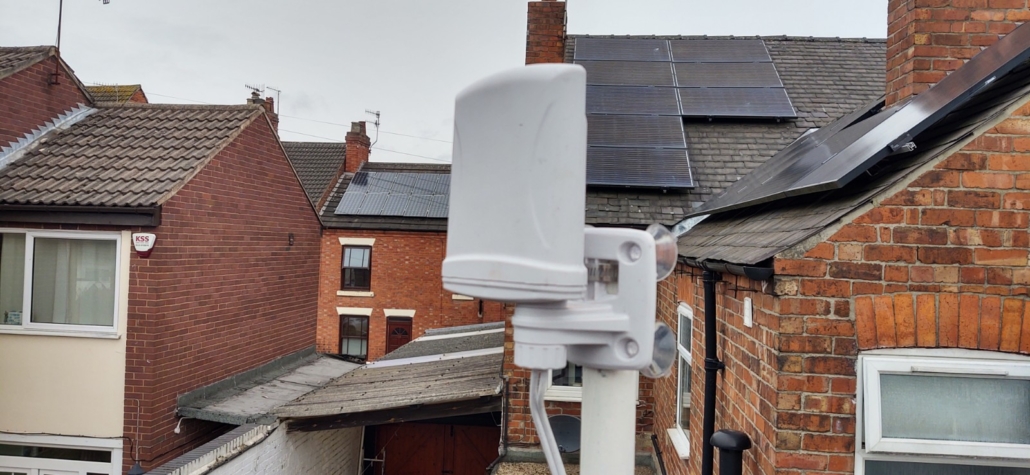
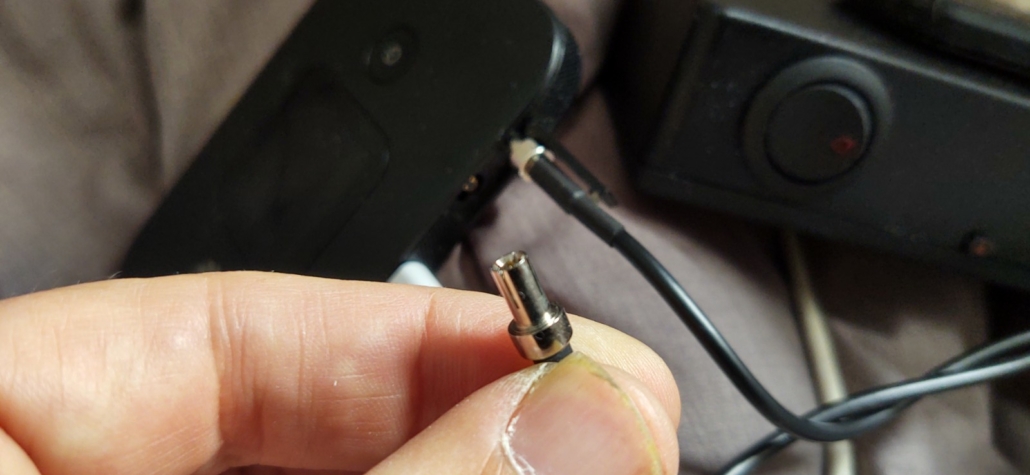
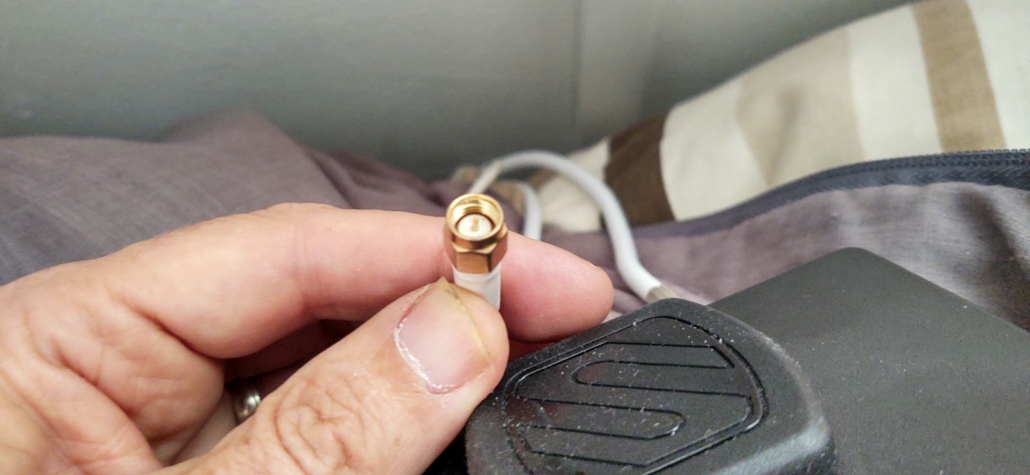
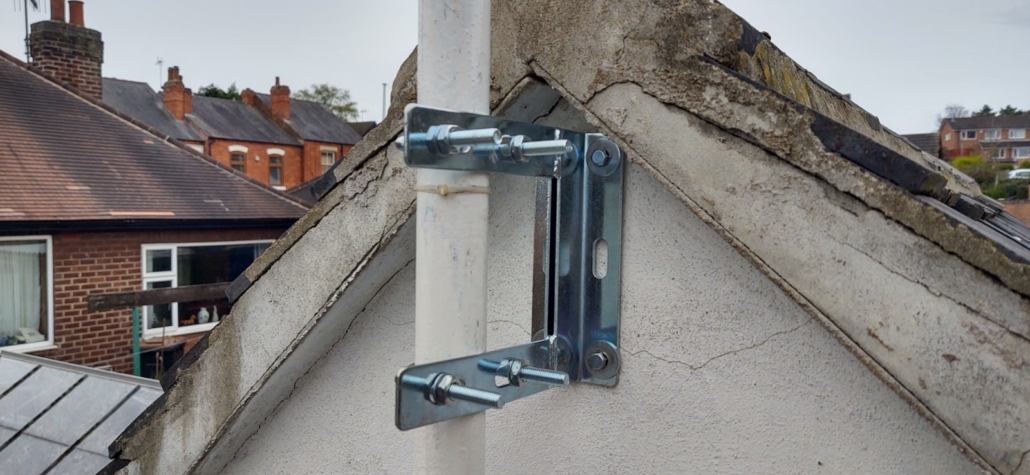
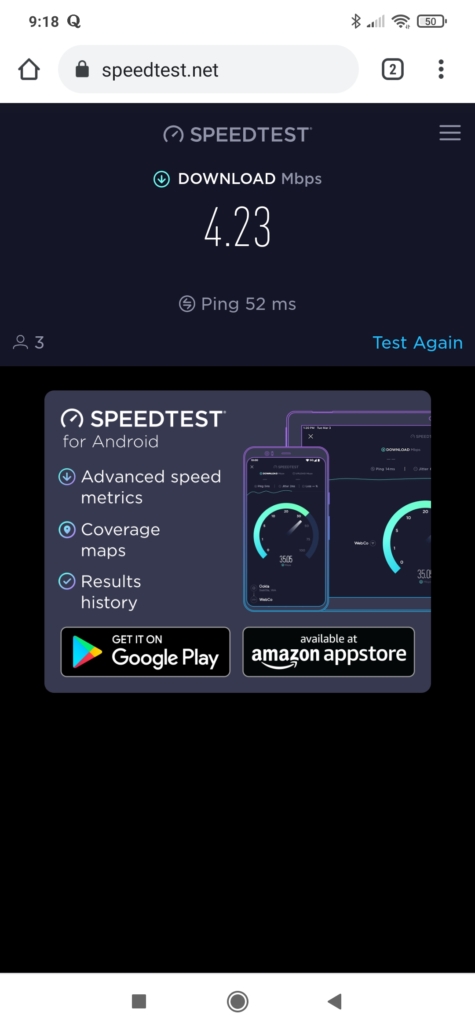
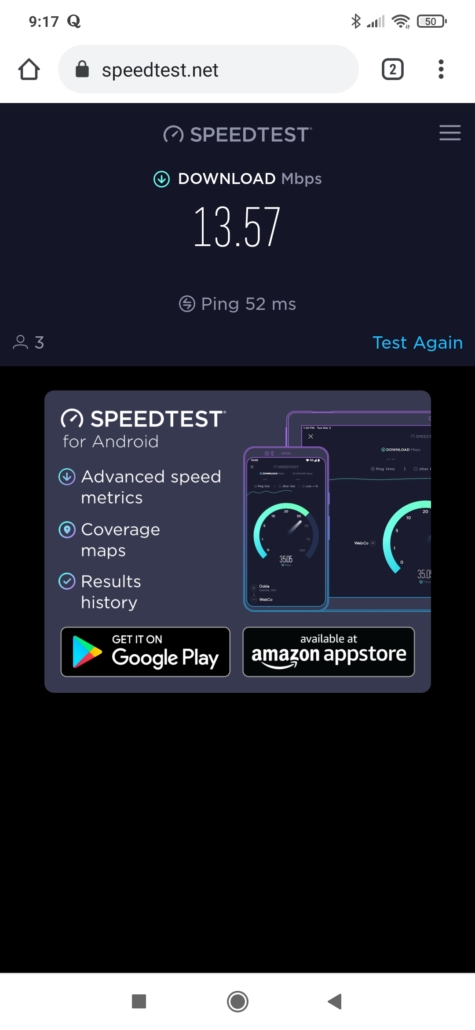





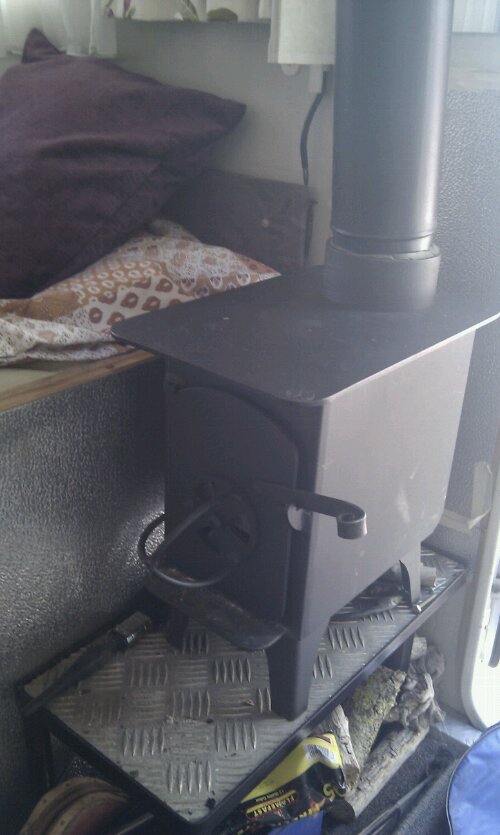


Hey J’s.
I started using a ‘Pointy-thing’ about 8 years ago when in the caravan in France. Works great, but for the rubber suckers left 4 brown marks where it was fitted to the outside bodywork. I sent photos c/w a rant & got a full refund & kept the antenna. Result.
Where did you get £360 pa from? Superdrug sim is £20 pm, no?
Kindest Wayne (in The Algarve)
Good work fella! Greetings to the Algarve from a suitably wet bank holiday Monday Britain… :-) I got £360 by plucking a random number from thin air it seems – just corrected it – muito obrigado. Jay
nice one… I just upgraded my huwaie to netgear nighthawk, saw a markable increase for home setup, went from 8-15 (mostly around 11) range to 15-26 (nmostly in 20’s)…. thats no external… was looking at getting an external, and the one you have put is in the wish list already so good to see real results…. ps ipad not worked for sat nav on our just finished trip to scotand.. only wifi based so not accurate… may get a bad elf which is proper GPS dongle, help out if we are in the sticks anywhere… take care both
Fantastic read! Boosting 4G internet speed at home with an outdoor antenna is a game-changer. The insights provided in this article are invaluable for anyone looking to enhance their connectivity. Can’t wait to implement these tips and enjoy faster internet speeds. Thanks for sharing such practical and useful information